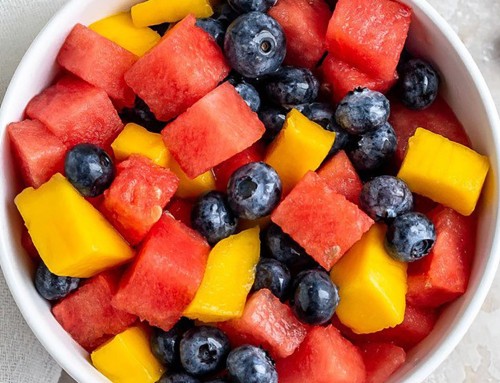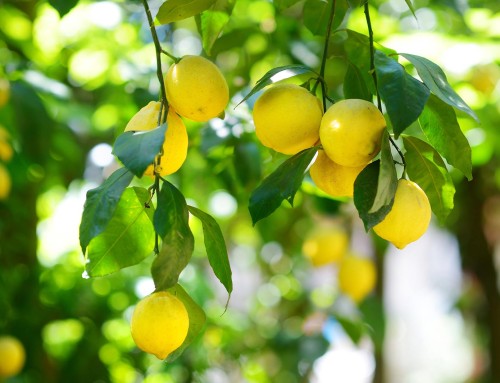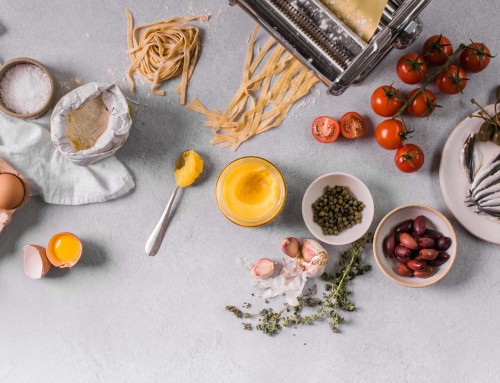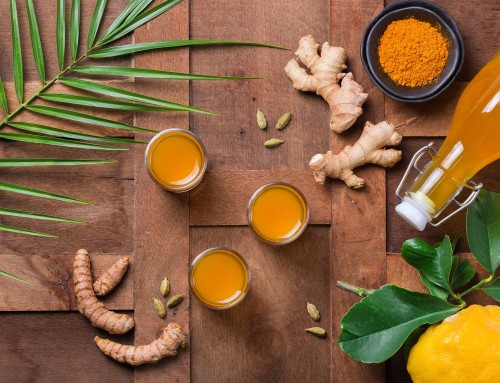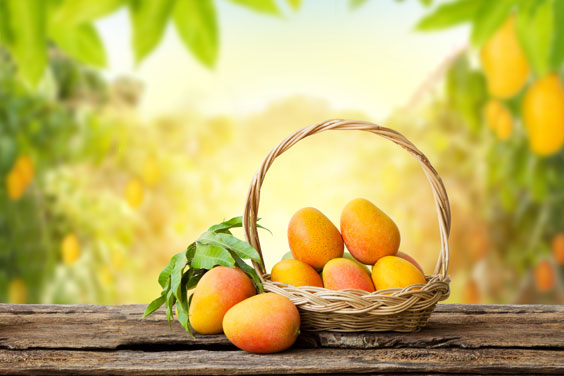
Mango – The Ayurveda King of Fruits
Mangoes are not eaten as routinely in the UK as are apples and pears, for instance, but if you ever try a fully ripe, sweet juicy mango, you will want to try it again and again. Eaten by themselves or in a variety of dishes, mangoes add antioxidants and fibre to your diet.

The “king of fruits” has been around for at least 6,000 years
Native to India and Burma, this sweet fruit was described in the ancient Sanskrit literature — for example, in Valmiki’s Ramayana. The mango was also the fruit of the kings in ancient India, where princes used to pride themselves on the possession of large mango gardens. Persian traders took the fruit into the Middle East while the Portuguese brought it to Europe and the New World. Mango cultivation arrived in Florida in the 1830s and in California in the 1880s, and now it is also grown in Hawaii, Mexico and South America.
Ever since the Vedic period, mangoes have been highly appreciated in ayurvedic healing and cooking
Mango trees belong to the same family as cashews and pistachios and can grow to the height of 50 feet in India. All parts of the tree are used for different purposes. The bark, leaf, flowers, fruit and seed offer a variety of medicinal purposes. There are also over a thousand varieties of mangoes that vary in shape from round to pear-shaped to narrow and oval and can weigh as much as four pounds each.
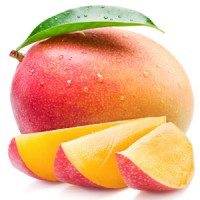
Ripe mangoes are succulent and sweet, with a yellow-orange or red skin
They are ready to eat when they are soft to touch and yield to gentle pressure. They should also omit a full fruity aroma from the stem end. Most supermarket mangoes are green, but you can ripen them at room temperature. Once they ripen, store them in the refrigerator for up to three days. The best eating mango is fibre free, but even a stringy mango can be sweet and juicy.
Ayurveda considers ripe mango sweet and heating. It balances all the three doshas and acts as an energiser.
Green, unripe mango is also used in Indian cooking
Several varieties are specially cultivated for using raw. Green mango could be picked long before ripening while it is still hard. The fruit is grated and added to dhals and vegetables, or made into chutneys and pickles. The ayurvedic qualities of green mango are sour, astringent and cooling. They should not be eaten alone or in large quantities because they can aggravate the doshas, especially Pitta dosha. However, prepared ayurvedically, in combination with spices (for example, in a chutney), they help digestion and improve the flavour of food.
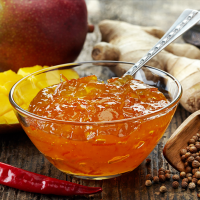
Mangoes are in season from January through August, peaking in June
Mangoes from South Florida are the best in the United States since the soil and climate are ideal. Try to find organic mangoes that have not been treated with fertilizers or pesticides. Also beware of imported mangoes, which are often irradiated or sprayed with chemicals. Your supermarket or grocer can tell you where the fruits are from.
Mangoes are rich in antioxidants, such as beta carotene and vitamin C
They also contain bioflavonoids, the compounds that help plants capture energy from the sun, and when eaten they aid our immune system. Mangoes also supply potassium and fibre and are low in calories. The insoluble fibre, abundant in mangoes, aids the elimination of waste from the colon and helps prevent constipation.
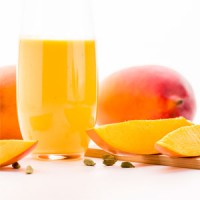
Mangoes support all the seven dhatus (body tissues) and provide a very satisfying snack or dessert
An ayurvedic mango lassi provides a great refreshing drink for any summer meal. A milk-mango shake cools the physiology and helps weight gain. Mango Chutney makes a delicious and spicy accompaniment to any dish. Mangoes can also be added to puddings, salads or fruit desserts. Try to use fresh mango instead of canned mango purée, which is void of the nutritional benefits of fresh fruit and may contain added sugar.
Mango Lassi
Ingredients
- A ½ cup of fresh organic yoghurt
- 1 large organic mango
- 1½ cups water
Directions
- Peel the mango and cut the flesh into a blender. Add enough water to cover the mango and purée until smooth.
- Add yoghurt and the rest of the water and blend until smooth.
Mango Milkshake
Ingredients
Serves 2
- 2 cups organic whole milk
- 1 organic mango
Directions
- Boil the milk and let it cool to room temperature. Peel the mango and cut the flesh into a blender.
- Add enough milk to cover the mango and purée until smooth. Add the rest of the milk and blend for 15 seconds.
Mango and Basmati Salad
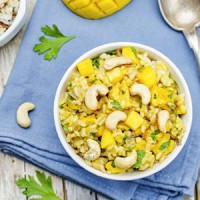
Serves 4 as a side dish, 2 as a main dish
Ingredients
- 1 cup basmati rice
- 2 cups of water
- ¼ teaspoon salt
- 1 mango
- ½ daikon radish
- ¼ cup roasted cashews
- 2 tablespoons roasted pumpkin seeds
Directions
- Wash rice and place in a medium-size pot with water and salt.
- Bring to a boil, cover and cook on low heat for 20 minutes, until the rice absorbs all the water.
- Fluff with a fork and let it cool to room temperature.
- While the rice is cooking, cut the mango flesh away from the pit, then peel and cut into cubes. Place the cubed mango in a large bowl.
- Peel daikon radish, quarter it lengthwise and slice thinly. Add to mango along with the cashews and pumpkin seeds.
- Pour some Mango Dressing or your favourite dressing over the salad, and toss until completely combined.
Mango Dressing
Ingredients
- 1 teaspoon ghee
- 2 teaspoons Organic Pitta Churna
- 1 lime or half a lemon
- 2 tablespoons olive oil
- 2 tablespoons freshly chopped coriander (cilantro)
- Salt and freshly ground black pepper
- 2 tablespoons Mango Chutney
Directions
- Heat ghee in a small pan and fry Organic Pitta Churna for 30 seconds, then let it cool.
- Grate the peel of the lime or lemon, and squeeze the juice.
- Mix it with the spiced ghee. Whisk in the olive oil, freshly chopped
Coriander, salt and pepper and the Mango Chutney. - Pour the dressing over the Mango and Rice Salad or your favourite salad, and toss until completely combined.
Courtesy of mapi.com
DISCLAIMER: The information in this document is presented for the sole purpose of imparting education on Maharishi AyurVeda and neither the information nor the products are intended to diagnose, treat, mitigate, cure or prevent any disease. If you have a medical condition or are pregnant or lactating, please consult a health professional and it is recommended that you speak with your physician before making significant changes to your diet or routine.


